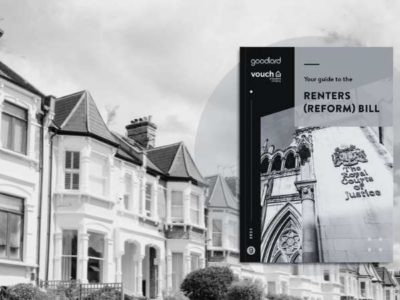Homebuyer demand for new homes dropped during the closing stages of 2022, whilst the level of new-build stock available to buyers increased.
Alliance Fund analysed new-build buyer demand based on the number of new homes listed for sale that have already been sold as a proportion of all stock available.
The latest figures show that during the final quarter of 2022, demand for new homes sat at 18.5%, meaning almost a fifth of all available new-build homes listed for sale had been snapped up by homebuyers.
However, it’s clear that buyer appetites have been dented by a heightened degree of market turbulence, with the new-build buyer demand falling by -10.6% on the previous quarter and -15.3% on an annual basis.
In fact, just one of the top 20 major cities has avoided a drop in demand for new homes.
In Aberdeen, demand has remained flat between the third and fourth quarter of 2022, climbing marginally on an annual basis (+0.1%).
Cardiff has seen the largest decline in demand on a quarterly basis at -27%, followed by Portsmouth (-21.5%) and Nottingham (-16.3%).
Annually, the most notable drop in demand has been recorded in Bristol and Plymouth, with both cities seeing a decline of -28.2%, followed by Sheffield (-23.4%).
During Q4 of last year, new-build for sale stock accounted for 8.2% of total homes listed for sale, up +1.6% quarterly and a +0.6% increase versus the same period the previous year.
Manchester is home to the highest current level of new-build stock, accounting for 15.5% of total homes listed.
Liverpool (+4.5%), Glasgow (+7.9%) and Edinburgh (+3.7%) saw the largest increase in new-build market stock as a percentage of total listings versus the previous quarter, while Manchester (+9.8%), Liverpool (+4.6%) and Newport (3.9%) saw the largest annual increase.
CEO of Alliance Fund, Iain Crawford, commented:
“The closing stages of 2022 presented a far more challenging landscape for the nation’s homebuyers, with increasing mortgage costs and fears of a market downturn causing many to delay or postpone their purchase.
Much like the wider market, the new-build sector has felt the pinch in this respect, with demand for new homes declining pretty much across the board both on a quarterly and annual basis.
This presents a challenge for developers who have spent considerable time and money bringing homes to market and now face the prospect of either sitting on their stock until such time the market rebounds, or marketing them at a lower price point to the detriment of their profit margins.
However, those who have been anticipating a change in market sentiment should already have a contingency plan in place to prevent any notable, long-term impact.
At Alliance Fund, we see a cooling sales market as an opportunity to pivot, by deploying developments originally intended for sale within the Build to Rent market.
This ensures that we can maintain a revenue stream for both our investors and ourselves without a loss of momentum with respect to current and future projects.
The good news is that with buyer confidence starting to return, coupled with an influx of new-build stock reaching the market, we should see a lift in buyer demand in 2023.”
| Table shows new-build demand in Q4, 2022 and the quarterly and annual change – sorted by quarterly change | |||
| Location | New-build Buyer Demand – Q4, 2022 | Quarterly Change (%) | Annual Change (%) |
| Aberdeen | 1.9% | 0.0% | 0.1% |
| Liverpool | 2.3% | -0.5% | -11.6% |
| Edinburgh | 18.8% | -1.2% | -6.8% |
| Swansea | 26.1% | -1.2% | -16.8% |
| Leicester | 8.2% | -1.4% | -6.5% |
| Manchester | 4.6% | -2.9% | -21.8% |
| Newcastle | 7.3% | -3.1% | -7.3% |
| London | 13.7% | -4.9% | -3.6% |
| Plymouth | 39.3% | -5.2% | -28.2% |
| Glasgow | 5.3% | -6.4% | -9.8% |
| Birmingham | 13.0% | -7.7% | -2.3% |
| Newport | 8.8% | -7.8% | -15.6% |
| Sheffield | 22.3% | -8.1% | -23.4% |
| Southampton | 32.8% | -8.5% | -18.6% |
| Bournemouth | 43.8% | -10.4% | -21.5% |
| Leeds | 13.6% | -10.6% | -16.9% |
| Bristol | 31.4% | -13.2% | -28.2% |
| Nottingham | 17.4% | -16.3% | -18.8% |
| Portsmouth | 42.3% | -21.5% | -15.6% |
| Cardiff | 15.6% | -27.0% | -6.4% |
| Great Britain | 18.5% | -10.6% | -15.3% |
| Table shows new-build stock as a proportion of all stock listed for sale and the quarterly and annual change – sorted by quarterly change | |||
| Location | New-build Stock – Q4, 2022 | Quarterly Change (%) | Annual Change (%) |
| Liverpool | 13.1% | 4.5% | 4.6% |
| Glasgow | 7.9% | 3.8% | 3.1% |
| Edinburgh | 12.1% | 3.7% | -1.4% |
| Newport | 6.6% | 3.0% | 3.9% |
| Manchester | 15.5% | 2.9% | 9.8% |
| Leeds | 7.9% | 2.5% | 2.1% |
| Birmingham | 10.9% | 2.4% | 1.7% |
| Newcastle | 7.0% | 2.0% | 2.0% |
| Leicester | 6.0% | 1.8% | 2.1% |
| Sheffield | 6.5% | 1.7% | 0.7% |
| Aberdeen | 10.4% | 1.2% | 2.0% |
| Nottingham | 6.5% | 1.1% | -0.5% |
| London | 9.1% | 0.9% | 0.6% |
| Cardiff | 3.8% | 0.7% | 1.1% |
| Bristol | 4.4% | 0.3% | -2.2% |
| Swansea | 2.3% | 0.3% | 0.2% |
| Southampton | 2.1% | 0.3% | -1.4% |
| Bournemouth | 3.3% | 0.1% | -0.5% |
| Plymouth | 4.2% | -0.1% | -0.2% |
| Portsmouth | 2.5% | -1.0% | 1.6% |
| Great Britain | 8.2% | 1.6% | 0.6% |
New-build demand based on the proportion of new-build homes already sold subject to contract or under offer as a percentage of all new-build stock listed for sale
New-build stock based on the proportion of all new-build stock listed for sale as a percentage of total stock listed.
Data sourced from Rightmove and Zoopla





















Comments